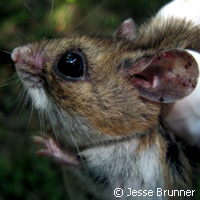Biodiversity loss puts health at risk
A new UK-US study shows that the loss of biodiversity, including mammals and beneficial bacteria, puts human health at risk. Presented in the journal Nature, the research highlights the important relationship between conservation and disease. The loss of species in ecosystems triggers the rise of pathogens, disease-causing organisms. To reduce the likelihood of subsequent infectious diseases jumping form wildlife to livestock and humans, the authors are calling for better monitoring of areas containing large numbers of domesticated animals. The researchers found that the flora, fauna and microbes most likely to disappear, as biodiversity is lost, are often those that buffer infectious disease transmission. Those that remain tend to be species that magnify the transmission of infectious diseases like West Nile virus, Lyme disease, and Hantavirus. 'We knew of specific cases in which declines in biodiversity increase the incidence of disease,' said Felicia Keesing, an ecologist at Bard College in New York, US. 'But we've learned that the pattern is much more general: biodiversity loss tends to increase pathogen transmission across a wide range of infectious disease systems.' The pattern holds true for various types of pathogens, namely viruses, bacteria and fungi, and for many types of hosts, whether humans, other animals, or plants, she pointed out. 'When a clinical trial of a drug shows that it works, the trial is halted so the drug can be made available,' Professor Keesing said. 'In a similar way, the protective effect of biodiversity is clear enough that we need to implement policies to preserve it now.' Richard Ostfeld from the US-based Cary Institute of Ecosystem Studies explained that in the case of Lyme disease, 'strongly buffering species like the opossum are lost when forests are fragmented, but white-footed mice thrive. The mice increase numbers of both the blacklegged tick vector and the pathogen that causes Lyme disease'. However, he admitted that for the moment scientists were unable to explain why the most resilient species - 'the last ones standing when biodiversity is lost' - are the ones that also amplify pathogens. Identifying the variables involved in infectious disease emergence is difficult but critical, according to Andrew Dobson of Princeton University in the US. Biodiversity is an important factor, but so are land use changes and human population growth and behavior, he said. 'When biological diversity declines and contact with humans increases, you have a perfect recipe for infectious disease outbreaks,' Professor Dobson explained. Careful monitoring of areas in which large numbers of domesticated animals are raised or fish are farmed is imperative to stop the spread of infectious diseases from wildlife to livestock and humans, according to the researchers. Commenting on the study, Sam Scheiner of the National Science Foundation (NSF) said: 'Global change is accelerating, bringing with it a host of unintended consequences. This paper demonstrates the dangers of global change, showing that species extinctions may lead to increases in disease incidence for humans, other animals and plants.' Global biodiversity has declined at an unprecedented pace since the 1950s. Current extinction rates are 100 to 1,000 times higher than in past eras. Experts expect the rates to increase at least 1,000 times more in the next 50 years. Expanding human populations can increase contact with novel pathogens through various activities including land clearing for agriculture and hunting for wildlife. Researchers from in the Zoological Society of London in the UK, and the US-based Harvard Medical School, University of North Carolina at Chapel Hill, Oregon State University, Penn State University, University of Florida, Cornell University, Wildlife Trust and Virginia Tech contributed to this study.
Countries
United Kingdom



